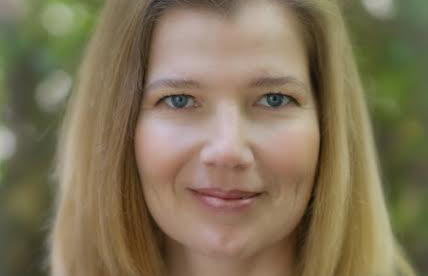I really wanted to love “Into the Beautiful North”, a new play at the SD Repertory Theater, especially because of its pedigree. It is based on the book by Luis Alberto Urrea –it was the KPBS One Book San Diego for 2012 and one of Amazon’s Best Books 2015- and was adapted by noted playwright, Karen Zacarias. It is directed by Sam Woodhouse and has a stellar cast, including one of my favorite performers, Herbert Siguenza. However, as I was watching the play, I felt like it had great potential, but hadn’t quite gotten there yet.
The play starts out in a small coastal village in the northern state of Sinaloa, Mexico, that is being threatened by “narcotraficantes”. All the men of the village have left for the United States to find work and send money back home. The main character is 19 year old Nayeli who, after watching the movie, “The Magnificent Seven”, also decides to head north to the USA to find seven Mexican men to bring back home and help defend her village against the bad hombres. In addition, she wants to see her father again as he left the village many years ago and is now living in Illinois. She carries around a beloved old letter that he sent her, but in the end, he disappoints her. There are two other men she is also looking for. One of them is her aunt’s old flame, who is supposed to live in Tijuana, but has since moved to San Diego, and a young man who came to visit her village as a Mormon missionary and has morphed into a weed smoking surfer dude, also in San Diego.
Nayeli is accompanied on her trip by her two loyal friends, the Goth Veronica, who fancies herself as a vampire and is called, “Vampi”, and Tacho, the flamboyantly gay owner of the town’s only internet café. Together, they face many adventures and hardships as they take the bus north to Tijuana, sneak into San Diego twice, and drive across the country to Illinois. On the way, they learn many lessons and meet both kind and cruel people in different scenarios, some of which seem right on the mark and grab you, while others are lacking. The same goes for the narration and music.
 The cast gives it their all, but stumbles now and then. Nayeli is played by Kenia Ramirez who gets the sweet and innocent part down pat, but could be a little fiercer. The talented Jennifer Paredes is good as Vampi, who comes to realize that maybe she just wants to be Veronica. She also displays a musical talent playing the ukulele and singing. Bryant Hernandez is very engaging as Tacho. Both Catalina Maynard and Herbert Siguenza are old pros, playing different characters, including Nayeli’s aunt and a waitress, and a lecherous Mexican border patrol agent and a kind gay man who helps Tacho in Tijuana.
The cast gives it their all, but stumbles now and then. Nayeli is played by Kenia Ramirez who gets the sweet and innocent part down pat, but could be a little fiercer. The talented Jennifer Paredes is good as Vampi, who comes to realize that maybe she just wants to be Veronica. She also displays a musical talent playing the ukulele and singing. Bryant Hernandez is very engaging as Tacho. Both Catalina Maynard and Herbert Siguenza are old pros, playing different characters, including Nayeli’s aunt and a waitress, and a lecherous Mexican border patrol agent and a kind gay man who helps Tacho in Tijuana.
The standout for me was sexy Jorge Rodriguez who plays Captain Jack Sparrow [he comes to Nayeli in her dreams] and the hilarious, Atomiko, a character who accompanies Nayeli, Tacho, and Vampi on their journey.
This production will especially appeal to people who are bilingual and bicultural as it will be easier for them to get some of the inside jokes.
A work in progress, this play is on its way to being beautiful.
- “Into The Beautiful North” runs through April 23 at the San Diego Repertory Theatre in Horton Plaza
- Performances are Wednesday at 7 p.m., Thursday-Saturday at 8 p.m., Saturday at 2 p.m. and 7 p.m., Sunday at 2 p.m. or 7 p.m., depending on the date.
- Running Time: 2 hrs. 15 min.
- Tickets ($38-$65) are at 619-544-1000 or org























 What he does not know is that Angelica has met and fallen in love with a young Americano, Charlie Sutter, and Luisa is a gay feminist who has no interest in being a proper Spanish lady. Then, there is also the cunning stepmother, Don Aragon’s second wife, Belen de Aragon, a gold-digger who is carrying on an affair behind his back with an American that she passes off as her Spanish lawyer. She would like to see the girls shipped off to a convent in Spain.
What he does not know is that Angelica has met and fallen in love with a young Americano, Charlie Sutter, and Luisa is a gay feminist who has no interest in being a proper Spanish lady. Then, there is also the cunning stepmother, Don Aragon’s second wife, Belen de Aragon, a gold-digger who is carrying on an affair behind his back with an American that she passes off as her Spanish lawyer. She would like to see the girls shipped off to a convent in Spain.
